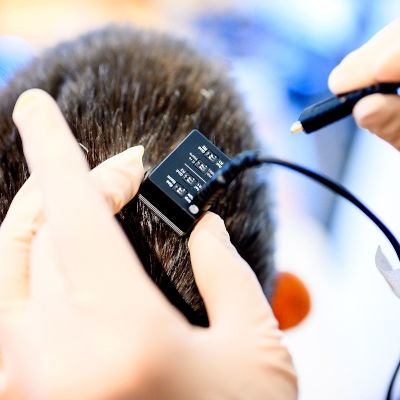How to bypass the blood-brain barrier to deliver healing antibodies
Jan. 04, 2024.
2 mins. read.
2 Interactions
Transporting existing therapeutic antibodies from the peripheral bloodstream into the central nervous system
The blood-brain barrier blocks the entry of antibodies into the brain as protection. But this also limits the potential use of antibody therapeutics to treat brain diseases, such as brain tumors.
More than 100 FDA-approved therapeutic antibodies are used by medical teams to treat cancers and autoimmune, infectious and metabolic diseases. Finding ways to transport therapeutic antibodies from the peripheral blood stream into the central nervous system could create effective treatments that act in the brain, say researchers at the University of Alabama at Birmingham.
Bypassing the blood-brain barrier
In a study published in the journal Frontiers in Cell and Developmental Biology, they report that the therapeutic antibody trastuzumab (also used as coating material for transplantable devices and a human monoclonal IgG1 antibody), was able to penetrate the blood-brain barrier in a mouse model. (Trastuzumab is used to treat breast cancer and several other cancers.) The biocompatible polymer used to achieve that was poly 2-methacryloyloxyethyl phosphorylcholine (PMPC).
“This simple methodology has great potential to serve as the platform to not only repurpose the current antibody therapeutics, but also encourage the design of novel antibodies for the treatment of brain diseases,” said Masakazu Kamata, Ph.D., leader of the study and an associate professor in the UAB Department of Microbiology.
Safe, non-toxic delivery of antibodies
In a mouse model, the polymer-modified trastuzumab did not induce neurotoxicity, did not show adverse effects in the liver, and did not disrupt the integrity of the blood-brain barrier.
“Those findings collectively indicate that PMPC conjugation achieves effective brain delivery of therapeutic antibodies, such as trastuzumab, without induction of adverse effects, at least in the liver, the blood-brain barrier or the brain,” Kamata said.
Other researchers seeking to breech the blood-brain barrier have investigated various ligands other than PMPC to boost transport, such as ligands derived from microbes and toxins, or endogenous proteins like lipoproteins. These generally have had undesirable surface properties — such as being highly immunogenic, highly hydrophobic or charged. PMPC does not exhibit those undesirable traits.
Support came from National Institutes of Health grants CA232015 and MH130183, an O’Neal Comprehensive Cancer Center at UAB Pre-R01 award, and National Science Foundation grant DMR-2208831.
Citation: Ren, J., Jepson, C. E., Nealy, S. L., Kuhlmann, C. J., Osuka, S., Azolibe, S. U., Blucas, M. T., Kharlampieva, E., & Kamata, M. (2023). Site-oriented conjugation of poly(2-methacryloyloxyethyl phosphorylcholine) for enhanced brain delivery of antibody. Frontiers in Cell and Developmental Biology, 11, 1214118. https://doi.org/10.3389/fcell.2023.1214118 https://doi.org/10.3389/fcell.2023.1214118
Let us know your thoughts! Sign up for a Mindplex account now, join our Telegram, or follow us on Twitter.


.png)

.png)


.png)






0 Comments
0 thoughts on “How to bypass the blood-brain barrier to deliver healing antibodies”